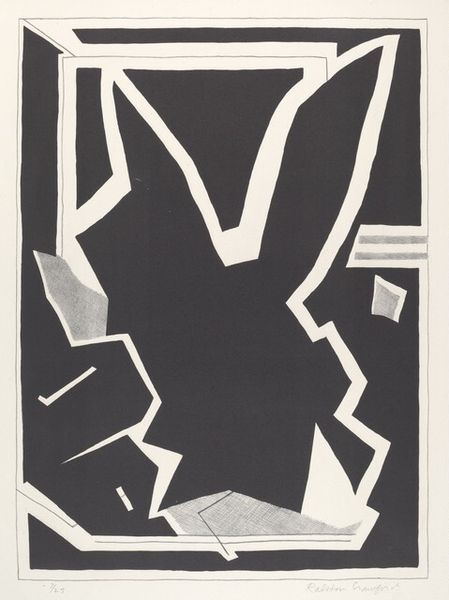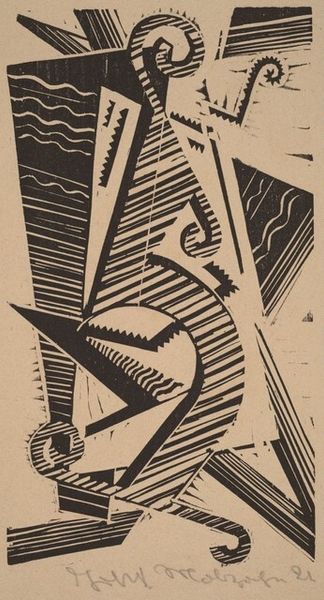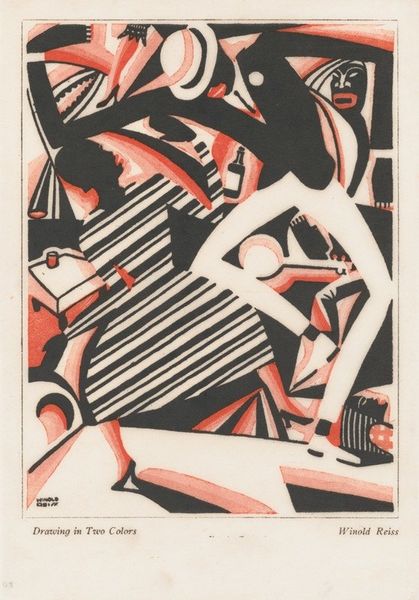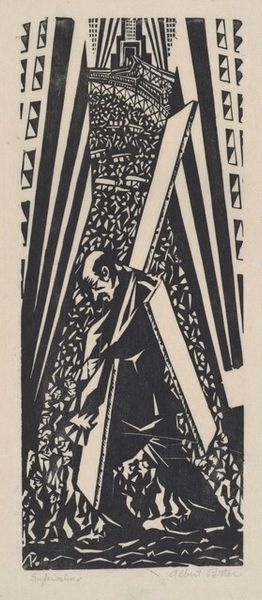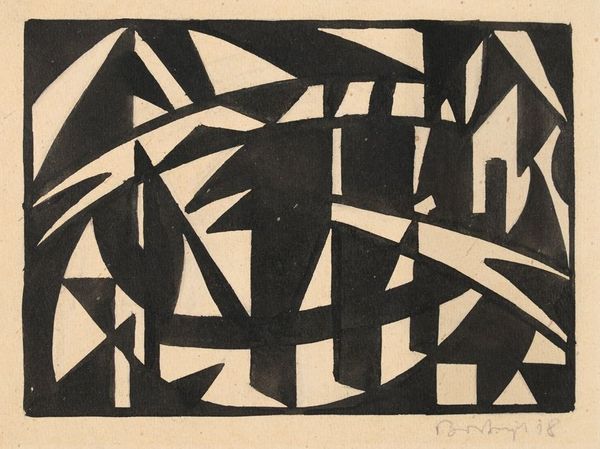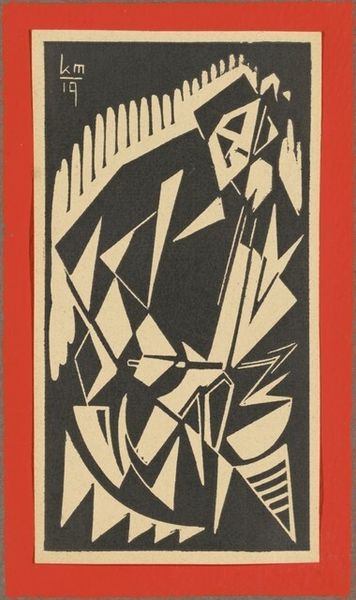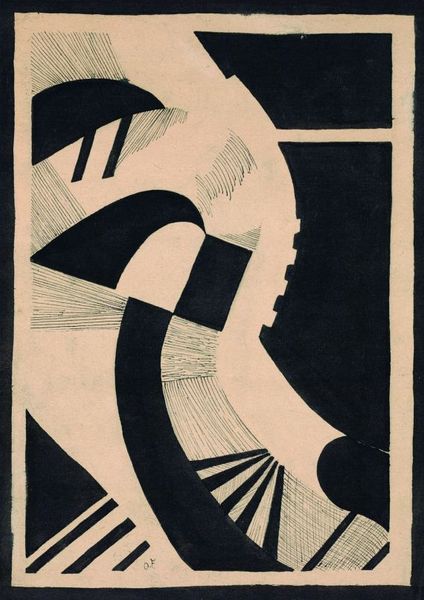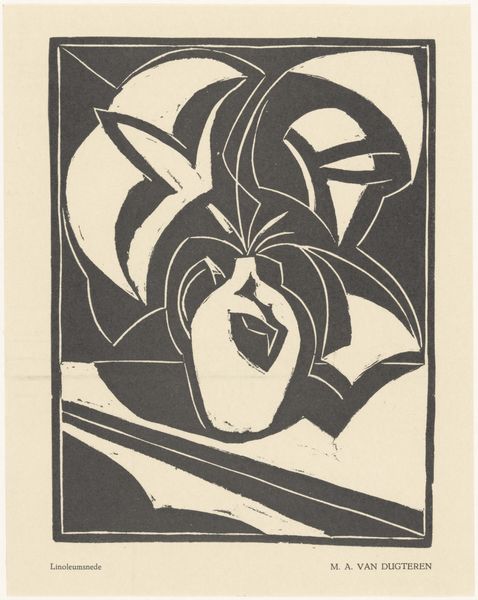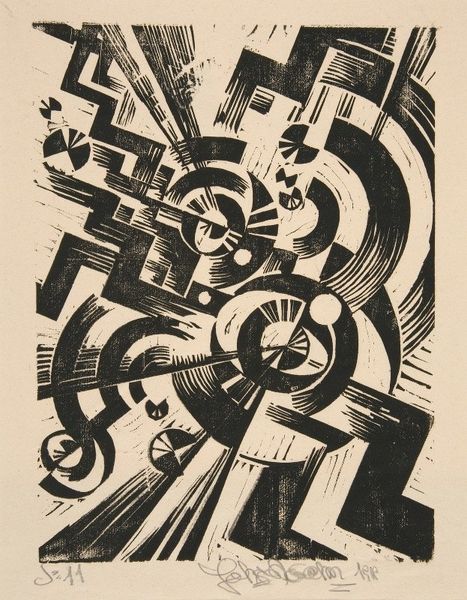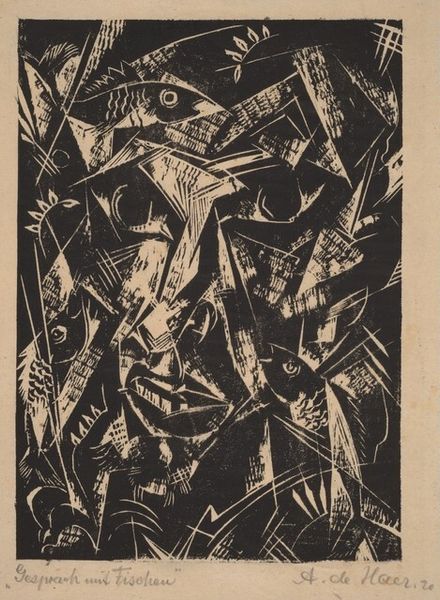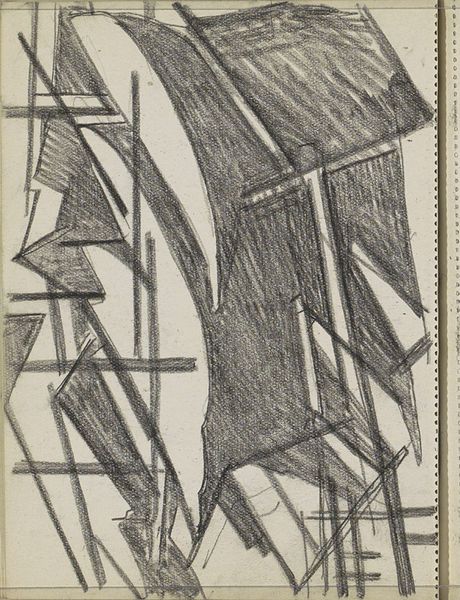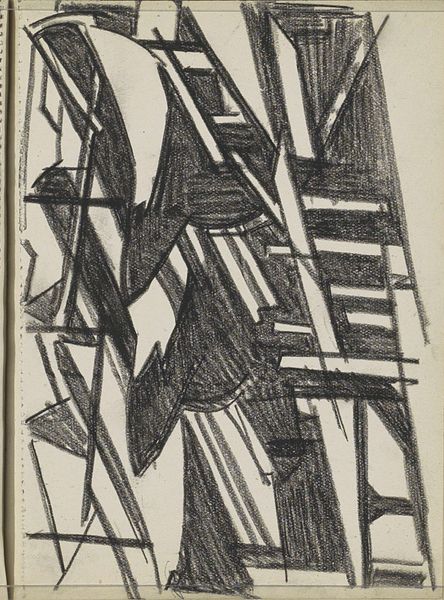
Dimensions: support: 289 x 184 mm
Copyright: © The estate of Helen Saunders | CC-BY-NC-ND 4.0 DEED, Photo: Tate
Editor: Here we have Helen Saunders' *Monochrome Abstract Composition*. It's striking how the artist employs solely monochrome to forge such a dynamic arrangement of geometric forms. How do you approach a work so rooted in pure form? Curator: Indeed. The absence of color directs our attention to the scaffolding of the artwork. Note the interplay between the sharp, angular lines and the soft curvature of the implied circles. How does that tension speak to you? Editor: I hadn't considered the tension. It's as though the rigid forms are trying to break free from the circles. Curator: Precisely. Saunders' mastery lies in her ability to evoke depth and movement using only line and shape. It's a testament to the power of formalism. Editor: I see the geometric shapes in a new light. It is a powerful work. Curator: Indeed, a powerful testament to the intrinsic qualities of art.
Comments
tate 6 months ago
⋮
http://www.tate.org.uk/art/artworks/saunders-monochrome-abstract-composition-t00622
Join the conversation
Join millions of artists and users on Artera today and experience the ultimate creative platform.
tate 6 months ago
⋮
Saunders’s abstract works often have figurative references. Here a column is composed of identical, interlocking figures. These figures resemble the replaceable parts of a machine. The column contrasts with a curved background that seems to be supported by other figures. We see flat jagged shapes that resemble arms and legs. This figurative basis is typical of vorticism, whose abstract forms are often rooted in imagery of machines and the city. In 1914 Wyndham Lewis had suggested that the human figure could be abstracted down to ‘a simple black bullet’. Gallery label, October 2020
